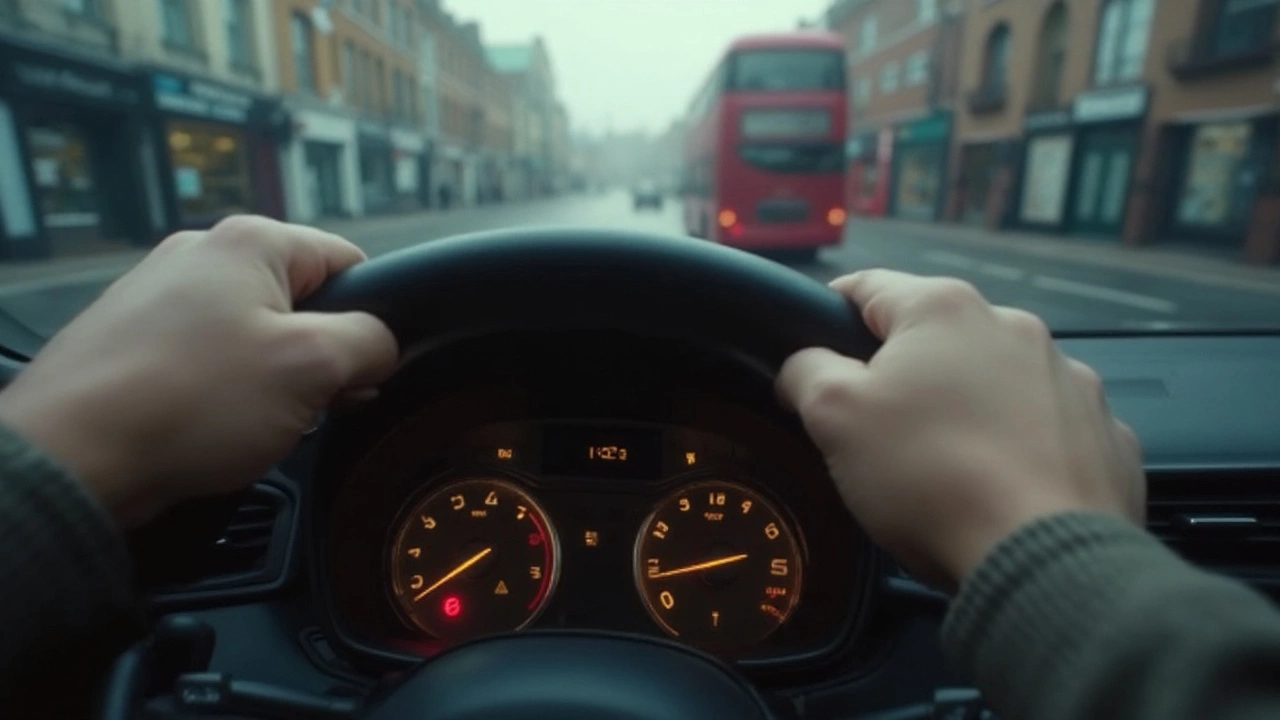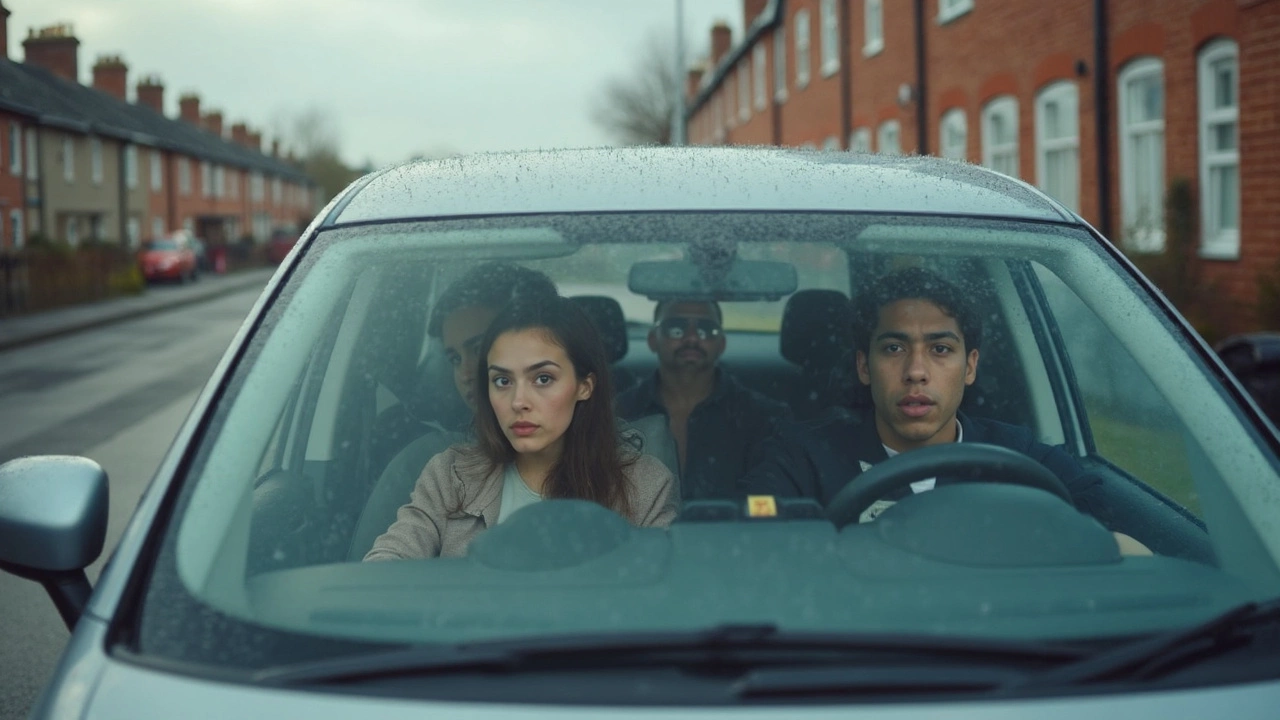Your first time driving feels weird. You’re suddenly in charge of a heavy machine, there’s a million things to watch—other cars, street signs, even pedestrians darting out. No wonder your hands get clammy on the wheel.
But here’s the thing: most people feel shaky their first time out, and that’s totally normal. Even people who ace their written tests get rattled when the car actually starts moving. The pedals, the mirrors, the steering wheel—they all demand your attention at once. It’s kind of like learning to ride a bike again, but with traffic zooming by.
If you’re running through every possible what-if, you’re not alone. It’s easy to think, “What if I stall? What if I annoy everyone behind me?” That anxiety is more common than anyone admits, and usually, the person in the passenger seat (your instructor or a parent) has seen nervous beginners hundreds of times before. They expect those rookie jitters.
- Why the First Drive Feels So Intense
- Biggest Mistakes Beginners Make
- Pro Tips for a Smoother First Drive
- What Happens After the First Lesson?
Why the First Drive Feels So Intense
Sitting behind the wheel for your first time driving can feel a bit like being on stage with a spotlight aimed right at you. It’s not just nerves — there’s actually a rush of adrenaline because your brain is in overdrive, processing tons of new stuff at once. Your body reacts by tensing up, and suddenly tasks as simple as turning the key or switching on headlights take some effort.
A big part of the stress is multitasking. Studies on learner drivers show beginners have trouble dividing their attention between checking mirrors, watching road signs, and steering straight—all in real-time. That’s a lot to handle for someone used to the predictable pace of walking or cycling. Plus, the car itself can feel intimidating. It weighs a ton and acts fast with just a small push of your foot; no wonder every stop feels dramatic.
Then there’s the pressure from outside. Most beginners worry about other drivers judging them. Honks from behind? It’s easy to take them personally, even though no driver started as a pro. Add in your instructor’s voice, the dashboard lights, and maybe a parent clutching the armrest, and there’s sensory overload.
Experts say this intensity is normal and even helpful—it keeps you focused. But driving gets easier because your brain builds up “muscle memory.” Repeating driving movements—like turning, braking, or using signals—gradually turns them into second nature. After a few lessons, you’ll notice your heart racing less, and you’ll start to catch more details around you instead of missing half the signs.
The best tip? Remember the car can only go where you tell it—so breathe, check your mirrors, and take it one step at a time.
Biggest Mistakes Beginners Make
Every new driver makes slip-ups, and you’re not alone if you’re worried about looking clueless. Some mistakes happen way more often than others—and knowing them helps you steer clear. Here’s the lowdown on what usually trips up first-timers:
- Overcorrecting the steering wheel: New drivers often jerk the wheel too much because they feel every bump. A lot of people zigzag instead of steering smoothly. The trick is to keep your hands relaxed and focus your eyes farther down the road, not just in front of the car.
- Forgetting to check mirrors: It’s easy to stare straight ahead and ignore what’s happening behind or beside you. Make a habit of glancing at mirrors every 5-8 seconds. Instructors see this mistake all the time.
- Hitting brakes too hard or not enough: You might stomp on the pedal and jerk to a stop or brake too late. Smooth, early braking is safer and helps you avoid getting honked at.
- Mixing up pedals: Some beginners hit the gas when they mean to brake, especially when nervous. Always double-check your foot before moving. Practice makes a difference here.
- Panicking at intersections: Lots of first-time drivers freeze at busy junctions or forget who’s got the right of way. Remember: Take a breath, and never rush decisions.
A 2023 UK driving study found that nearly 35% of first time driving students forgot to signal at least once during their first lesson. It’s an easy one to miss, especially when you’re overloaded with new info. To make it clearer, check out these stats from real driving schools:
| Mistake | % Of Beginners* |
|---|---|
| Forgetting to check mirrors | 40% |
| Hesitating at junctions | 33% |
| Not signaling | 35% |
| Stalling the car | 28% |
| Braking too suddenly | 36% |
*Data collected from UK driving instructor surveys, 2023
If you trip up on any of these, don’t sweat it. Instructors pretty much expect a bumpy start. The main thing is to be aware—spot the pattern and work on it in your next lesson. Practice helps these little mistakes disappear faster than you think.

Pro Tips for a Smoother First Drive
If you want your first time driving to be less stressful, there are some tricks that really help. First, don’t jump in the car already stressed out. Give yourself extra time before your lesson so you’re not rushing—or worse, running late and making the nerves worse.
Start in a quiet spot. Parking lots on weekends or empty side streets are a safe bet. Lots of instructors recommend this because it lets you get a feel for the car without having traffic zooming around.
Get comfy before you even start the engine. Adjust your seat, mirrors, and steering wheel. Put your foot on the brake right away, even before turning on the ignition. This way, you won’t suddenly jolt if you accidentally bump the gear, which freaks out a lot of new drivers.
Learn what each control does while you’re still parked. The pedals, indicators, and windshield wipers all matter. Feeling silly for double-checking? Don’t. Even experienced drivers have moments where they forget which lever does what, especially in a new car.
- First time driving isn’t about impressing anyone. Focus on smooth, gentle actions—easy on the gas pedal, and don’t yank the wheel.
- Don’t stare just at the end of the hood. Keep your eyes scanning ahead, looking as far down the road as you safely can. This gives you more time to react and keeps you from making sudden moves.
- Expect to mess up. Stalling, jerky starts, mixing up the pedals—it happens to almost everyone. If you make a mistake, stop safely, take a breath, and restart. Nobody’s grading you on style.
- Talk to your instructor or supervising driver. Telling them exactly what makes you nervous actually helps, because they’ll give you the right feedback and won’t spring surprises on you.
And here’s one overlooked tip: turn down any music, at least for your first few drives. Studies have shown that even background music can distract beginners. When you’re more confident, then you can make your driving playlist.
What Happens After the First Lesson?
Your first lesson is done, and chances are, you’re replaying every move and mistake in your head. Don’t stress—it’s seriously normal to feel like you messed up. Most new drivers say they felt anything but smooth after driving for the first time. Nobody becomes a pro overnight, and even seasoned drivers admit their first lesson was rough. That’s just part of the learning curve.
What comes next? For most people, it’s building on exactly what you just learned. Your instructor keeps a record of what you struggled with and what you handled well. After your first drive, expect feedback that’s pretty direct. Sometimes you’ll even get a confidence boost, because your instructor notices things you did right that you didn’t even realize.
- Review your instructor’s notes before the next lesson
- Practice visualization—think through tricky moves like turning or parking
- Watch short videos online covering basic maneuvers
- Talk through any fears or confusion with someone who drives
Most driving schools suggest lessons 1-2 times per week. More frequent practice, even if it’s just short drives with a family member, helps big time. Some learners—about 40%, according to a 2024 UK survey—say that extra practice with someone they trust eased their nerves after that first lesson.
You’ll also notice the boring stuff matters: bringing your permit, dressing comfortably, and arriving on time all make your next lesson less stressful. By the third or fourth session, muscle memory kicks in and you don’t overthink every tiny move.
| What Most Learners Report After First Lesson | Percentage |
|---|---|
| Nervous or anxious | 72% |
| Excited to keep learning | 53% |
| Felt overwhelmed by multitasking | 68% |
Your confidence with first time driving changes fast. After each lesson, take a minute to jot down what felt good and what confused you; you’ll be surprised at the difference just a few sessions make. Stay patient and remember: no one expects you to drive like a pro yet. Those nerves today? They fade each time you get behind the wheel.

